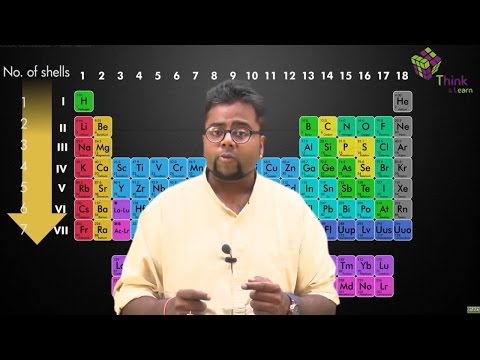Ionic radii, what is it? Let’s figure out what do we mean by ionic radii and its variation in groups and periods of the periodic table (modern periodic table).
What is Ionic Radius?
Ionic radius is the distance from the nucleus of an ion up to which it has an influence on its electron cloud.
Ions are formed when an atom loses or gains electrons. When an atom loses an electron it forms a cation and when it gains an electron it becomes an anion. The Ionic radius can be described as the distance between the nucleus of an ion and the outermost shell of the ion.
The atomic size of a cation will be smaller than that of the parent atom. An anion is relatively larger in size than its parent atom. This is because when an atom gains electrons the total number of electrons increases which tends to create more repulsion between electrons and thus overshadows the net effective nuclear charge.
Ionic Radius Periodic Table

For example,
- Radius of potassium = 243pm.
- Radius of potassium ion = 138pm.
Atoms and ions which consist of an equal number of electrons are considered as isoelectronic species. For example, Both O2-, Mg2+ have 10 electrons but they don’t have the same ionic radius as the effective nuclear charge in both of them is different.
The radius of a cation will be smaller than that of the anion as a cation will have a greater positive charge (i.e. number of protons) so it will attract the electrons in the outermost orbital with greater force and hence the smaller size.
Trends in Ionic Radius in Groups
In a periodic table while moving down in a group, atoms add extra shell (number of electrons) due to which ionic radius of elements increases down a group.
| Ions | Configuration | Ionic radii(nm) | Ions | Configuration | Ionic radii(nm) |
| Li+ | 2 | 0.076 | F– | 2,8 | 0.133 |
| Na+ | 2,8 | 0.102 | Cl– | 2,8,8 | 0.181 |
| K+ | 2,8,8 | 0.138 | Br– | 2,8,18,8 | 0.196 |
Trends in Ionic Radius Across a Period
Let us understand the trends in the ionic radius of elements across a period with an example. In period 3 we find that the atomic radius first decreases and then suddenly increases and then again it slowly decreases. This is because the starting elements in a period tend to form cations, and the elements towards the end of a period tend to form anions.
Trends in ionic radii of ions in period 3
| Period 3 | Na2+ | Mg2+ | Al3+ | P3- | S2- | Cl– |
| Number of protons | 11 | 12 | 13 | 15 | 16 | 17 |
| Electronic configuration | 2,8 | 2,8 | 2,8 | 2,8,8 | 2,8,8 | 2,8,8 |
| Ionic radius | 0.102 | 0.072 | 0.054 | 0.212 | 0.184 | 0.181 |
Ions are formed as a result of the gain or loss of electrons. The formation of ions plays a vital role in any chemical reaction to form a new substance. By knowing the ionic radii we can study various chemical bonds formed during a reaction.
Recommended Videos

To know more about elements of the periodic table and its properties visit BYJU’S.




Comments